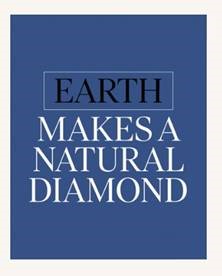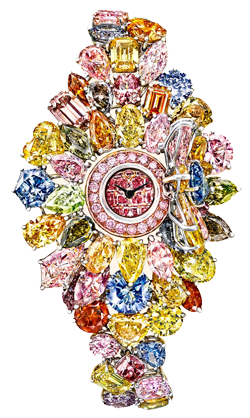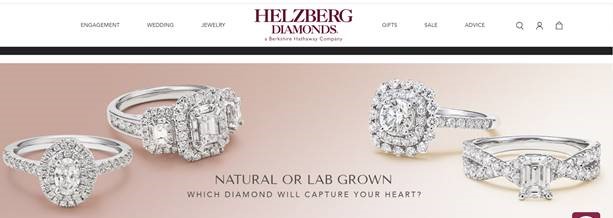Calling a diamond a diamond
Diamonds: natural or synthesized, out of the earth or out of a lab, mined or man-made, natural or lab-grown. All those words can describe “diamond” so why all that terminology?
When money is at stake, language can make a big difference.
There’s little argument anymore about what is a “real diamond.” Recent FTC Guidelines settled that. But the distinction between mined and lab-made is important — for suppliers, producers, retailers, consumers, and insurers.
The situation: Diamond jewelry sales have gotten sluggish. The catch phrase “A diamond is forever,” invented by De Beers to describe mined diamonds, no longer resonates with consumers as it once did.
Lab-made diamonds are making inroads into the jewelry market. Lab-grown diamonds are promoted as ethically clean, eco-friendly, socially conscious and, to top it off, less expensive than mined diamonds. All these properties are especially appealing to Millennials.
The supply of high-quality mined diamonds, especially large diamonds, is limited and is dwindling. But for lab-made gems it's just the opposite. Diamond-growing labs can produce gems of increasingly large size, of high clarity, in large numbers.
Fancy colored diamonds, extremely rare in nature and therefore extremely expensive, are easy to make in a lab and can sell at prices within reach of more consumers. Lightbox, for example, markets its lab-grown pink and blue, as well as colorless, diamonds at $800/carat.
Where does that leave mined diamonds?
 From naturaldiamonds.com
From naturaldiamonds.comEnter the NDC – the Natural Diamond Council. This is an organization for the marketing of mined diamonds, now with a new name and an energetic new marketing strategy.
The NDC promotes mined diamonds as natural — adopting a word that casts a shadow on lab-made stones. The NDC website, Only Natural Diamonds, plays on the colorful historic journey of a mined diamond, opposing that to the cold, mechanical production of diamonds from a lab.
“Diamonds are the oldest thing you’ll ever touch,” the NDC website says. “A natural diamond’s markings and inclusions are symbols of their age, and can be considered small time capsules that tell stories of the Earth’s formation.” Diamonds from the earth are “a finite natural resource” – unlike the continuous run of diamonds manufactured in a lab. The aim is to lure contemporary consumers with a more compelling diamond story.
The site aims to be a complete resource for jewelry buyers. There are educational pieces about diamond, beautiful jewelry to look at, articles by contributors from the diamond world, information about sustainable mining practices. Eventually there will also be links to retailers, and materials for retailers.
Meanwhile, retail is in flux. For years many jewelers resisted lab-made stones, but now more stores carry jewelry with both lab-made and mined diamonds. Jewelers can discuss with consumers the benefits of either, and the similarities of both, and leave the choice up to the buyer.
Some producers of mined gems have even come out with their own line of lab-grown diamonds. DeBeers sells mined diamonds under its Forevermark brand and lab-made diamonds under its Lightbox brand.
Berkshire-Hathaway’s Helzberg Diamonds is very up-front in promoting on its home page engagement rings with both mined and lab-made stones. The lab-growns include its own private label Light Heart® brand.
Buyers can look at both, educate themselves, check their pocketbook and decide.
Mined or Lab-made: Why insurers should care
Lab-made diamonds have a substantially lower value than mined diamonds of similar quality.
This may change over time due to the Lightbox effect – Lightbox’s low prices can lead to repricing of mined diamonds as well as diamonds from other labs. It is crucial that an appraisal state whether the diamond is mined or lab-grown and that the valuation be up to date.
FOR AGENTS & UNDERWRITERS
Mined and lab-grown diamonds are both genuine diamond, having the same chemical, physical and optical properties. But their valuations differ.
Value is determined, ultimately, by the market. New technologies and an increasing number of diamond producers mean more competition, which can put the pricing of both lab-made and mined diamonds in flux. Mined diamond values can go up or down. Regular appraisal updates will keep valuations in line with the current market.
An appraisal should state that the diamond is either mined (natural) or lab-made (synthetic, lab-grown, man-made, cultured, created).
It's important to have an appraisal from a trained gemologist appraiser who is familiar with the current market for mined and lab-made diamonds.
The best appraisal includes the JISO 78/79 appraisal form and is written by a qualified gemologist (GG, FGA+, or equivalent), preferably one who has additional insurance appraisal training. One course offering such additional training is the Certified Insurance Appraiser™ (CIA) course of the Jewelry Insurance Appraisal Institute.
Since most appraisers cannot afford the technology needed to recognize lab-made diamonds, we recommend having a report from a lab such as GIA, which issues reports for both mined and lab-made gems.
Follow these links to verify diamond reports you receive:
GIA Report Check
AGS Report Verification
GCAL Certificate Search
FOR ADJUSTERS
If the appraisal does not explicitly state a gem is mined or lab-grown, use every means possible to determine which it is.
Some lab-grown diamonds are inscribed with the name of the manufacturer, though some are not. And inscriptions on the gem's girdle can be removed. Deliberate non-disclosure is always possible.
Gem-grading labs have received parcels with lab-grown diamonds mixed in with mined gems. How many lab-made stones have not been "caught" and are out in the marketplace being sold, and priced, as mined diamonds? The potential for fraud and overpayment on claims is enormous.
Sales receipts and proof-of-payment docs are often helpful in establishing whether a diamond is mined or lab-made.
Brand names on an appraisal can yield useful information. Some brands indicate the diamond is lab-made (such as Lightbox and Light Heart). Mined diamonds may have a branded cut, or the jewelry may carry the name of the retailer (such as Tiffany, but also less well-known sellers).
Note that a branded diamond doesn’t necessarily mean the stone is of high quality or that it’s well-cut. Some are, some are not.
©2000-2025, JCRS Inland Marine Solutions, Inc. All Rights Reserved. www.jcrs.com




